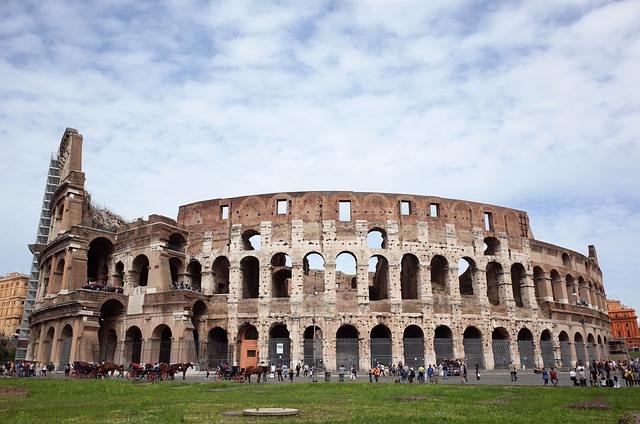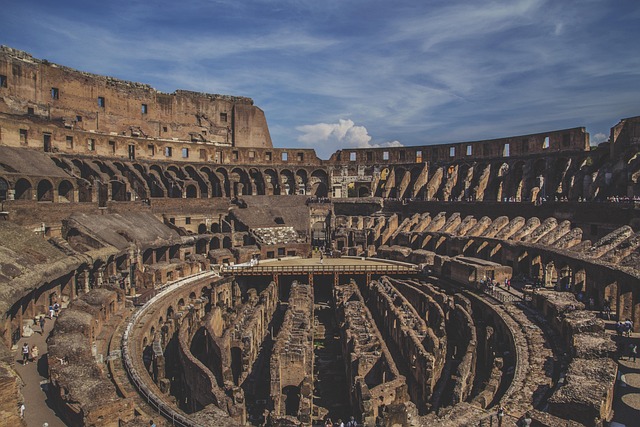Exploring the Colosseum: A Journey Through History
As one of the most iconic landmarks in the world, the Colosseum stands as a testament to the grandeur and ingenuity of ancient Rome. Known for its impressive architecture and fascinating history, this monumental amphitheater has attracted travelers from across the globe for centuries. Whether you’re a history buff, an architecture enthusiast, or simply looking for an unforgettable experience, a visit to the Colosseum is sure to leave a lasting impression.
A Glimpse Into History
The Colosseum, also known as the Flavian Amphitheater, was commissioned by Emperor Vespasian in AD 70-72 and completed by his son Titus in AD 80. This awe-inspiring structure was primarily used for gladiatorial contests, animal hunts, public spectacles, and executions. With a capacity of up to 80,000 spectators, it was the largest amphitheater of the Roman Empire, and its design showcased the Romans’ exceptional engineering skills.
Over the years, the Colosseum has undergone a number of transformations—both during and after the fall of the Roman Empire. Though it suffered considerable damage due to earthquakes and stone looting over the centuries, the Colosseum remains an enduring symbol of Rome’s power and cultural heritage.
Architecture That Inspires Awe
Standing 157 feet tall, the Colosseum was an architectural marvel in its time. Constructed from concrete and limestone, its elliptical shape measures 189 meters in length, 156 meters in width, and 57 meters in height. The structure is made up of four levels, each adorned with columns in the Doric, Ionic, and Corinthian styles.
The arena floor, once covered with sand (hence the term “arena” from the Latin word “harena”), was the stage for gladiatorial battles. Beneath the arena, a network of tunnels and chambers known as the hypogeum housed gladiators, animals, and equipment, adding to the drama of the events above.
Must-See Features Inside the Colosseum
The Arena Floor: Although the original floor is long gone, the modern reconstruction offers a glimpse of what the gladiators would have faced. It’s the perfect spot for imagining the intense battles that took place here.
The Hypogeum: As mentioned earlier, the hypogeum was the underground network where gladiators and animals were held before their entrance into the arena. Visiting this area is like stepping back in time to witness the behind-the-scenes workings of the Colosseum.
The Upper Levels: For panoramic views of Rome, head to the upper levels. From here, you can see not only the Colosseum itself but also the surrounding ancient Roman ruins, such as the Roman Forum and Palatine Hill.


Practical Tips for Visiting the Colosseum
Skip the Line: The Colosseum can get crowded, especially during the summer months. To avoid long wait times, consider booking your tickets in advance or opting for a guided tour.
Guided Tours: A guided tour will enrich your visit by providing historical context and uncovering hidden details about the Colosseum’s past. You’ll learn about the gladiators, the emperors, and the ancient events that once took place here.
Best Time to Visit: If you’re looking to avoid the crowds and enjoy a more peaceful experience, try visiting early in the morning or later in the afternoon. The Colosseum tends to be less crowded at these times, especially during the shoulder seasons (spring and fall).
Tickets and Access: Tickets for the Colosseum typically include access to the Roman Forum and Palatine Hill, offering a full day of exploration. Be sure to check if there are any special passes or discounts available, particularly for students or EU residents.
Photography: Don’t forget your camera! Whether you’re capturing the grandeur of the Colosseum from the outside or taking close-ups of the intricate details inside, there are countless opportunities for great photos. Just be mindful of the crowds and try to snap a shot at quieter moments for a more authentic feel.
.
Fun Facts About the Colosseum
Gladiator Games: Gladiators were often slaves or prisoners of war, but some volunteered for the fame and prize money. The games, which could last for days, were a form of entertainment for the Roman masses.
Innovative Design: The Colosseum’s retractable roof, known as the “velarium,” was an engineering marvel that protected spectators from the sun. The roof was made of large fabric sheets supported by a complex system of ropes and pulleys.
Historical Significance: The Colosseum has also been a symbol of Christian martyrdom, with many believing that early Christians were persecuted here, though historians debate the extent of this.
Nearby Attractions
While the Colosseum is undoubtedly the main attraction, there are many other fascinating historical sites nearby that are worth visiting:
The Roman Forum: Just a short walk from the Colosseum, the Roman Forum was the heart of ancient Rome. It’s home to ancient temples, basilicas, and the Senate House.
Palatine Hill: Known as the birthplace of Rome, Palatine Hill offers spectacular views of the city and houses the ruins of imperial palaces.
The Arch of Constantine: Located next to the Colosseum, the Arch of Constantine is a triumphal arch built to commemorate Emperor Constantine’s victory over Maxentius at the Battle of Milvian Bridge in AD 312.
A visit to the Colosseum is a journey into the heart of ancient Rome. Its monumental presence serves as a reminder of the Roman Empire’s grandeur and the gladiatorial spectacles that once captivated the masses. Whether you’re standing on the arena floor or gazing at the structure from afar, the Colosseum offers an unforgettable experience that takes you back in time, immersing you in the ancient world’s rich history and culture.
If you’re planning a trip to Rome, the Colosseum should be at the top of your itinerary. Get ready to marvel at one of the world’s most enduring landmarks—and don’t forget to take a moment to imagine what life was like during the days of the Roman Empire!
.
